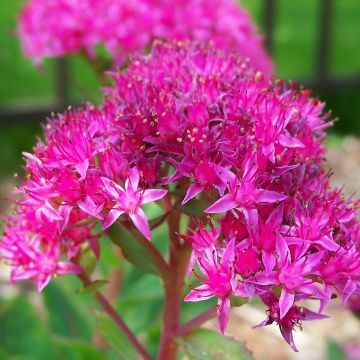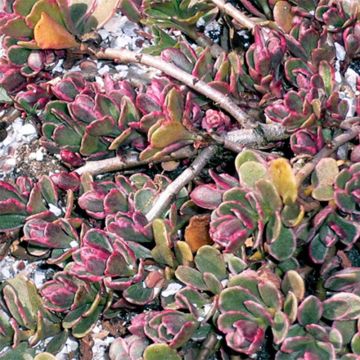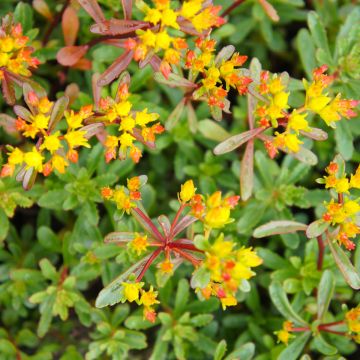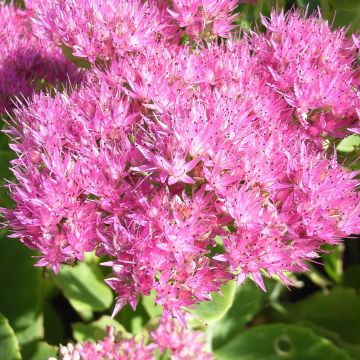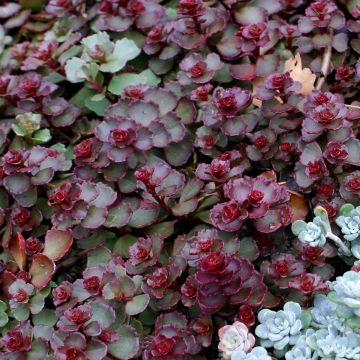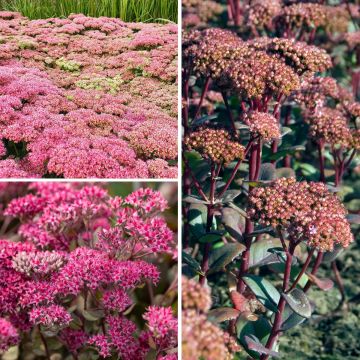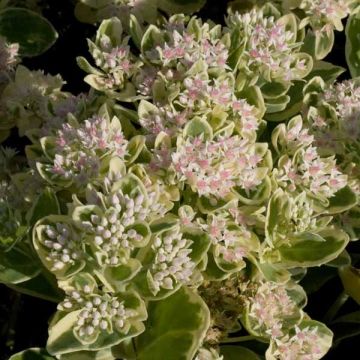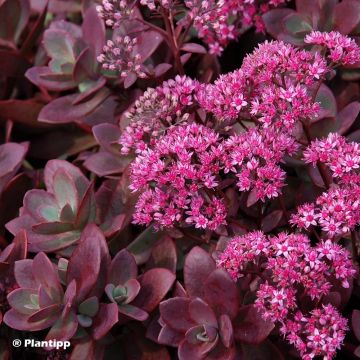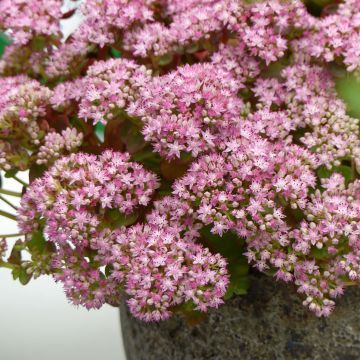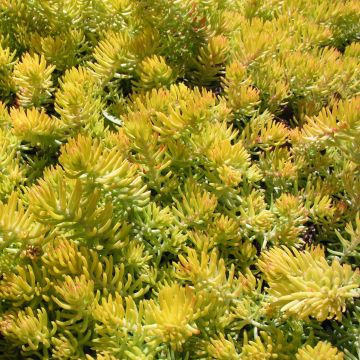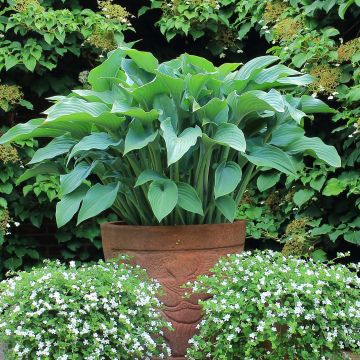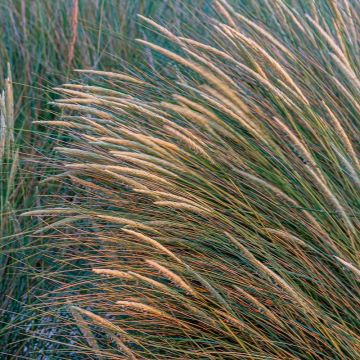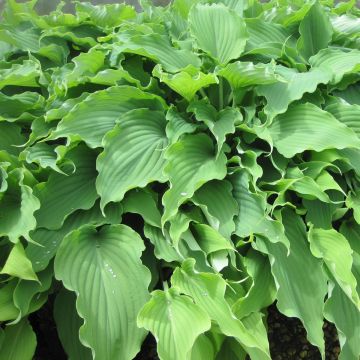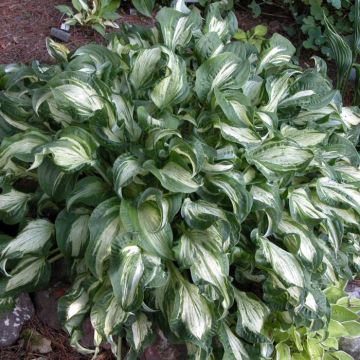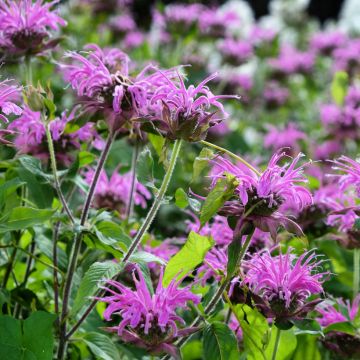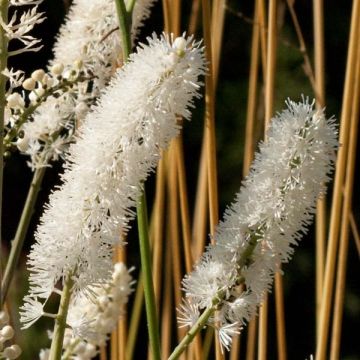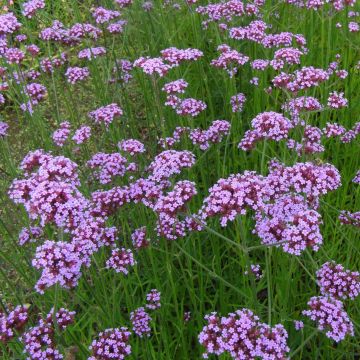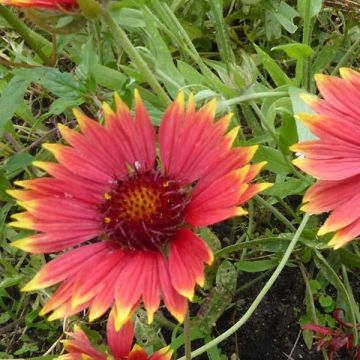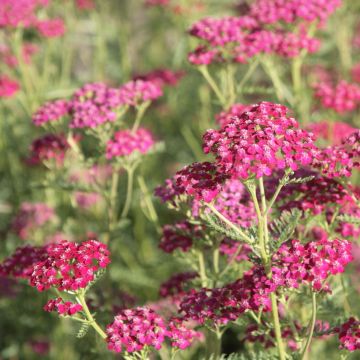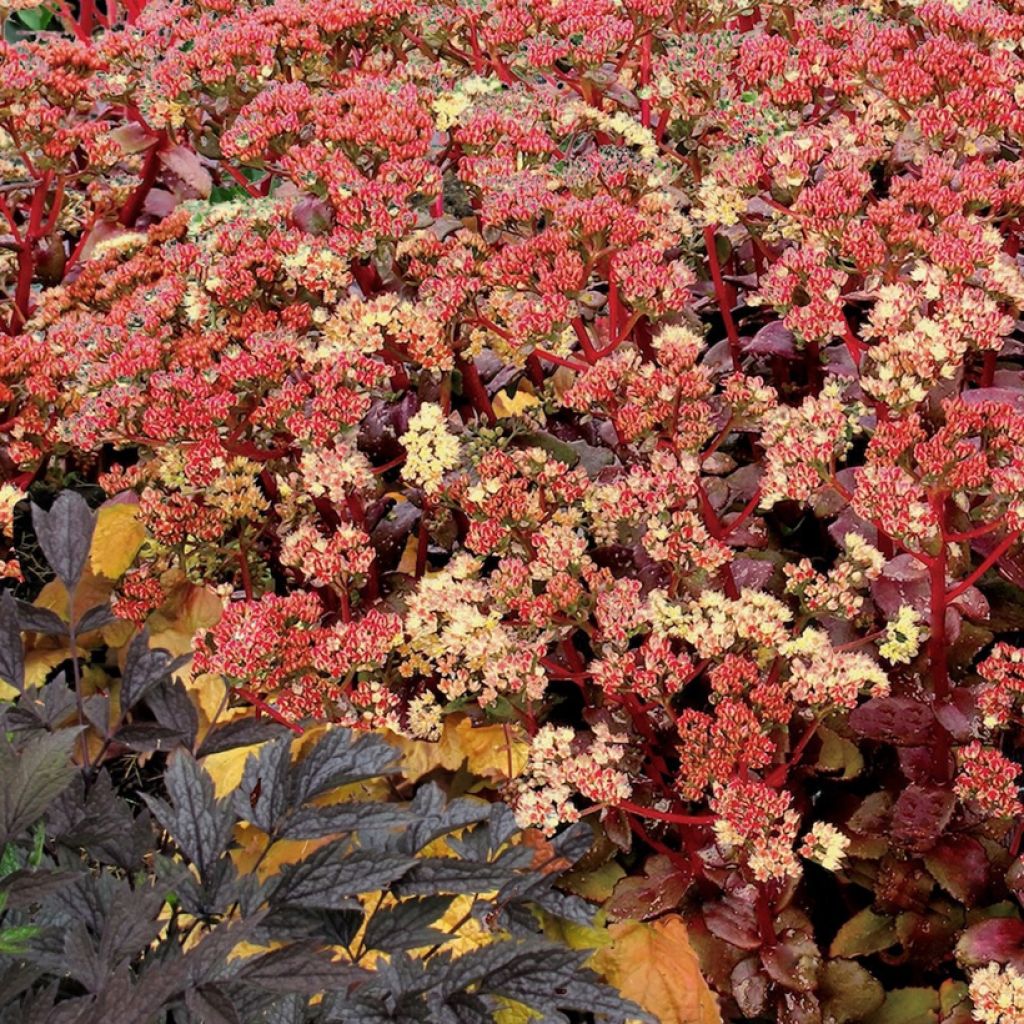

Hylotelephium telephium Peach Pearls - Stonecrop
Hylotelephium telephium Peach Pearls - Stonecrop
Hylotelephium telephium Peach Pearls ('TNSEDPP')
Ice plant, Stonecrop, Orpine, Live-forever, Witch's Moneybags, Livelong
This item cannot be shipped to the selected country
Delivery charge from €5.90
More information
Schedule delivery date,
and select date in basket
This plant carries a 12 months recovery warranty
More information
We guarantee the quality of our plants for a full growing cycle, and will replace at our expense any plant that fails to recover under normal climatic and planting conditions.
From €5.90 for pickup delivery and €6.90 for home delivery
Express home delivery from €8.90.
Does this plant fit my garden?
Set up your Plantfit profile →
Description
Sedum telephium 'Peach Pearls' is a very beautiful selection of the Orpine, which offers foliage coloured in burgundy red, a exuberant flowering in shades of pink gold and cream, and a very attractive wide and bushy habit. This perennial plant is decorative from spring to autumn, it flowers from the first year and its flowers feed bees in August-September. Resistant to frost as well as to drought, it works wonders in flower beds, rockeries, borders, and on sunny terraces.
Sedum telephium (synonyms Hylotelephium telephium, Sedum purpurascens) is a hardy perennial plant from the family Crassulaceae. It is native to central Europe, particularly the Caucasus, the region of Bithynia in Turkey, and Siberia. In France, this species has become naturalized in many regions where it can be found growing among rocks, at the base of hedges, and in the undergrowth. It is a nearly indestructible plant, capable of tolerating shade, moist or dry soils.
Hylotelephium telephium Peach Pearls has recently been introduced to the horticultural market. This plant, which rests in winter, quickly forms a bushy and rounded clump, wider than it is tall. Its foliage reaches 50cm in flower (35cm for the leaves) and 60cm in width. It is composed of strong stems of brick red colour carrying oval, thick leaves, which are arranged alternately and without petioles. This deciduous foliage displays remarkable shades: dark red with brown reflections, sometimes with traces of olive green. These nuances vary depending on the climatic conditions, the amount of light and water received. Its flowering, particularly abundant, takes place in August-September. It takes the form of multiple dense, rounded, almost flattened inflorescences, consisting of carmine red buds. These open into small star-shaped flowers ranging from golden pink to peach and cream yellow. The overall effect creates a stunning gradient of soft and warm tones on the plant. This nectariferous flowering is highly prized by pollinating insects. The vegetation of this sedum emerges from the ground each spring and dries up in autumn.
The Orpines or Sedums are proof that a poor soil can also offer beautiful specimens with generous flowering. If your soil is not rich, rather dry, even stony, or even slightly chalky, you can still enjoy hardy perennials (they can withstand temperatures below -15°C), which require no maintenance and promise to animate the garden with a constant flight of butterflies. These succulents are among the easy-going plants and offer flowers and foliage in various shades that allow for all garden fantasies, whether in flower beds or in pots.
Sedum Peach Pearls offers a unique range of colours and a very beautiful habit that allows for multiple associations. It can be planted in rockeries, at the front of a raised flower bed, on a slope, above a low wall, anywhere the soil is not at risk of being waterlogged in winter. The blue flowers highlight the soft and warm shades of this Peach Pearls variety, especially those of perennial flax, wild chicory, or Nepeta 'Cat's Pyjamas' for example. The salmon pink flowers of some yarrows ('Peachy Seduction', 'Red Velvet') also blend well with this sedum. In a natural setting, you can mix it, for example, with Stipa tenuifolia grasses and grey-leaved plants that often tolerate these difficult living conditions, just like it does. You will create an unforgettable scene by combining it with autumn asters ('Calliope', 'Little Carlow'). Magnificent in its appearance in a container, it is also an excellent flower for drying or for bouquets.
Report an error about the product description
Flowering
Foliage
Plant habit
Botanical data
Hylotelephium
telephium
Peach Pearls ('TNSEDPP')
Crassulaceae
Ice plant, Stonecrop, Orpine, Live-forever, Witch's Moneybags, Livelong
Sedum telephium 'Peach Pearls'
Cultivar or hybrid
Other Sedum
Planting and care
The Sedum 'Peach Pearls' should be planted in spring or autumn in a well-drained, even dry, soil, even rocky, and in full sun. It also tolerates heavier and slightly alkaline substrates if they are rather dry in winter. However, if your soil is likely to retain some moisture in winter, do not hesitate to generously add gravel to the planting hole. Take the same precautions if you want to place it in a container.
The pruning of the inflorescences should be done at the end of flowering or at the very beginning of spring if you prefer to keep the dried flowers on the plant for winter decoration. Beware of gastropods that tend to enjoy the leaves and create pretty cutouts in them. If your Sedum tends to thin out in the centre, it will be time to divide the stump (approximately every 3-4 years depending on its growth).
Planting period
Intended location
Care
This item has not been reviewed yet - be the first to leave a review about it.
Summer flowering perennials
Haven't found what you were looking for?
Hardiness is the lowest winter temperature a plant can endure without suffering serious damage or even dying. However, hardiness is affected by location (a sheltered area, such as a patio), protection (winter cover) and soil type (hardiness is improved by well-drained soil).

Photo Sharing Terms & Conditions
In order to encourage gardeners to interact and share their experiences, Promesse de fleurs offers various media enabling content to be uploaded onto its Site - in particular via the ‘Photo sharing’ module.
The User agrees to refrain from:
- Posting any content that is illegal, prejudicial, insulting, racist, inciteful to hatred, revisionist, contrary to public decency, that infringes on privacy or on the privacy rights of third parties, in particular the publicity rights of persons and goods, intellectual property rights, or the right to privacy.
- Submitting content on behalf of a third party;
- Impersonate the identity of a third party and/or publish any personal information about a third party;
In general, the User undertakes to refrain from any unethical behaviour.
All Content (in particular text, comments, files, images, photos, videos, creative works, etc.), which may be subject to property or intellectual property rights, image or other private rights, shall remain the property of the User, subject to the limited rights granted by the terms of the licence granted by Promesse de fleurs as stated below. Users are at liberty to publish or not to publish such Content on the Site, notably via the ‘Photo Sharing’ facility, and accept that this Content shall be made public and freely accessible, notably on the Internet.
Users further acknowledge, undertake to have ,and guarantee that they hold all necessary rights and permissions to publish such material on the Site, in particular with regard to the legislation in force pertaining to any privacy, property, intellectual property, image, or contractual rights, or rights of any other nature. By publishing such Content on the Site, Users acknowledge accepting full liability as publishers of the Content within the meaning of the law, and grant Promesse de fleurs, free of charge, an inclusive, worldwide licence for the said Content for the entire duration of its publication, including all reproduction, representation, up/downloading, displaying, performing, transmission, and storage rights.
Users also grant permission for their name to be linked to the Content and accept that this link may not always be made available.
By engaging in posting material, Users consent to their Content becoming automatically accessible on the Internet, in particular on other sites and/or blogs and/or web pages of the Promesse de fleurs site, including in particular social pages and the Promesse de fleurs catalogue.
Users may secure the removal of entrusted content free of charge by issuing a simple request via our contact form.
The flowering period indicated on our website applies to countries and regions located in USDA zone 8 (France, the United Kingdom, Ireland, the Netherlands, etc.)
It will vary according to where you live:
- In zones 9 to 10 (Italy, Spain, Greece, etc.), flowering will occur about 2 to 4 weeks earlier.
- In zones 6 to 7 (Germany, Poland, Slovenia, and lower mountainous regions), flowering will be delayed by 2 to 3 weeks.
- In zone 5 (Central Europe, Scandinavia), blooming will be delayed by 3 to 5 weeks.
In temperate climates, pruning of spring-flowering shrubs (forsythia, spireas, etc.) should be done just after flowering.
Pruning of summer-flowering shrubs (Indian Lilac, Perovskia, etc.) can be done in winter or spring.
In cold regions as well as with frost-sensitive plants, avoid pruning too early when severe frosts may still occur.
The planting period indicated on our website applies to countries and regions located in USDA zone 8 (France, United Kingdom, Ireland, Netherlands).
It will vary according to where you live:
- In Mediterranean zones (Marseille, Madrid, Milan, etc.), autumn and winter are the best planting periods.
- In continental zones (Strasbourg, Munich, Vienna, etc.), delay planting by 2 to 3 weeks in spring and bring it forward by 2 to 4 weeks in autumn.
- In mountainous regions (the Alps, Pyrenees, Carpathians, etc.), it is best to plant in late spring (May-June) or late summer (August-September).
The harvesting period indicated on our website applies to countries and regions in USDA zone 8 (France, England, Ireland, the Netherlands).
In colder areas (Scandinavia, Poland, Austria...) fruit and vegetable harvests are likely to be delayed by 3-4 weeks.
In warmer areas (Italy, Spain, Greece, etc.), harvesting will probably take place earlier, depending on weather conditions.
The sowing periods indicated on our website apply to countries and regions within USDA Zone 8 (France, UK, Ireland, Netherlands).
In colder areas (Scandinavia, Poland, Austria...), delay any outdoor sowing by 3-4 weeks, or sow under glass.
In warmer climes (Italy, Spain, Greece, etc.), bring outdoor sowing forward by a few weeks.

































